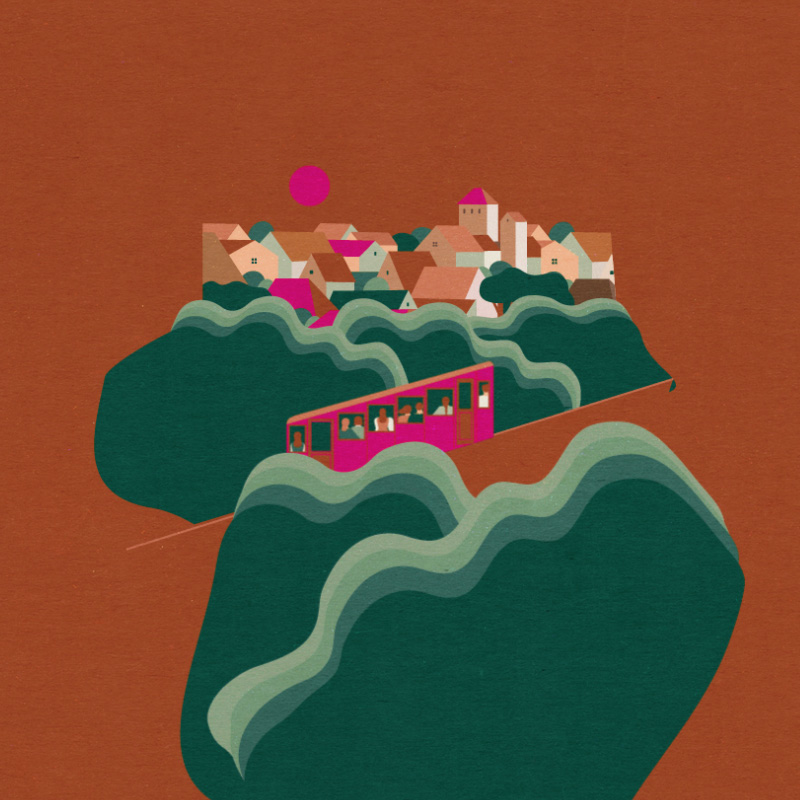Technical Monuments – The Old Funiculars of Kaunas
> BACK TO 100 STORIESThere are three funiculars in Lithuania and two of them operate in Kaunas. A funicular is a lift that takes the passengers up the mountain. But sometimes this ancient transportation system is called a short railway because the cars are pulled up the mountain using a combination of cables and rail tracks. Only a few of the funiculars that became popular all over the world in the nineteenth century remain – there are currently about 80 of them in Europe. The funiculars in Kaunas are considered to be among the oldest – they are monuments of technical history.
The funicular in Žaliakalnis was built in 1931. A considerable number of the intelligentsia – scientists, writers, civil servants – lived in Žaliakalnis back then. Going down the hill to work in Naujamiestis and climbing up the stairs after work every day was inconvenient, so they planned to install a funicular. Initially the passengers were transported by one wooden car, but a second one was soon installed. The Žaliakalnis funicular has two stops – one at the top and one at the bottom. The lift was scheduled to operate twice a day: in the morning when the civil servants go to work and in the afternoon when people returned home. However, there were so many people wanting to go up by funicular that it was decided to run it all through the day.
The Žaliakalnis funicular can accommodate thirty-six passengers and it moves at a speed of 2 m/sec. – a journey of 142 m up or down the hill takes just one minute and thirty-eight seconds. This funicular typically carried two million passengers a year, but a record of five million people was reached in 1970. Today, 400–600 passengers use the funicular every day.
The second Kaunas funicular was installed in Aleksotas at the end of 1935. It improved the connection between the city center and Aleksotas, where an aerodrome, the institutes of Vytautas Magnus University, the Astronomical Observatory of the Ministry of National Defense of Lithuania and other important institutions were located. The Aleksotas funicular is unique as its original traction equipment, wooden cars and benches, and station buildings have survived. One car can accommodate 25 passengers. The length of the funicular track is 132,9 m and the journey takes a little over a minute. During the interwar period, the lift used to make 226 trips a day. The highest number of passengers carried in a year was 894.000 in 1960.
The Žaliakalnis and Aleksotas funiculars are included in the Registry of Immovable Cultural Heritage Sites of the Republic of Lithuania. A trip on this historical transportation system is an opportunity to get in touch with the city’s past: as we go up the hill and descend, we can imagine what the enlightened people of Kaunas and its workers saw through the windows while going to work half a century ago, or what the kids who escaped from their lessons were discussing while taking the funicular – older people in Kaunas remember that the funiculars were one of the few sources entertainment the children had.

